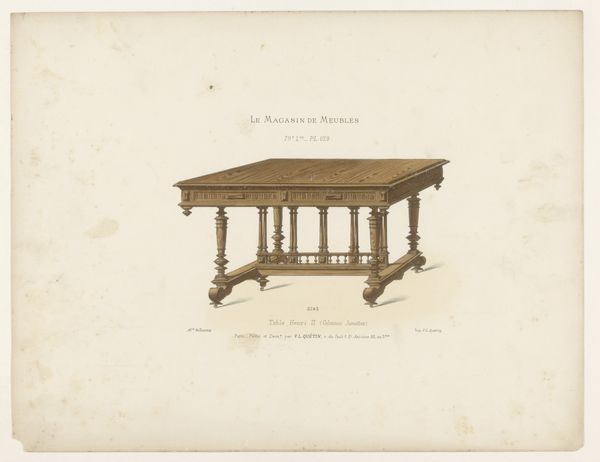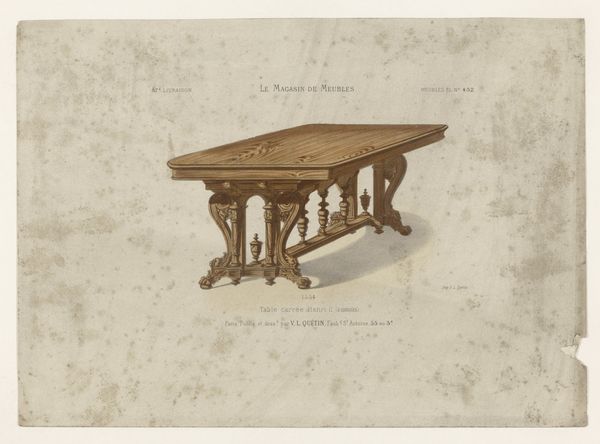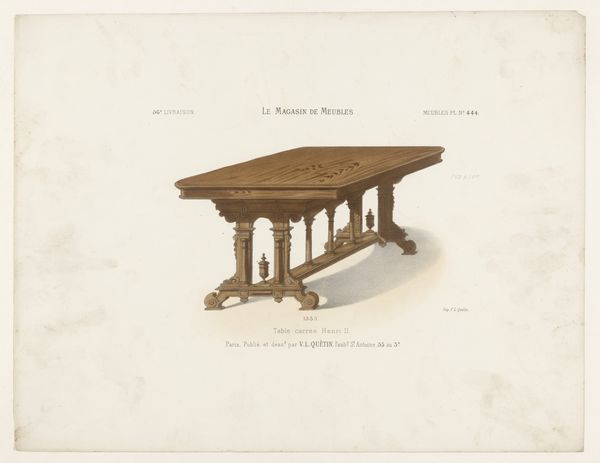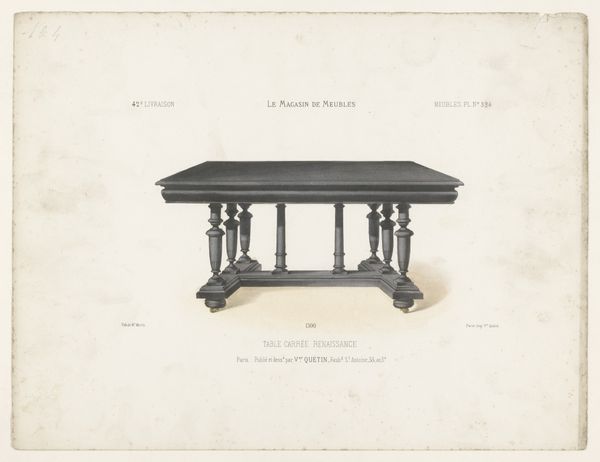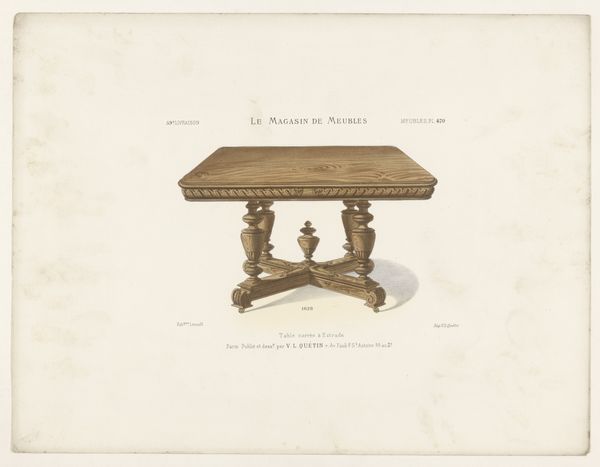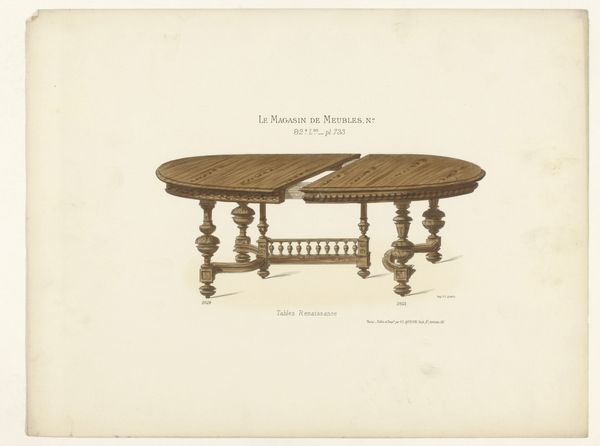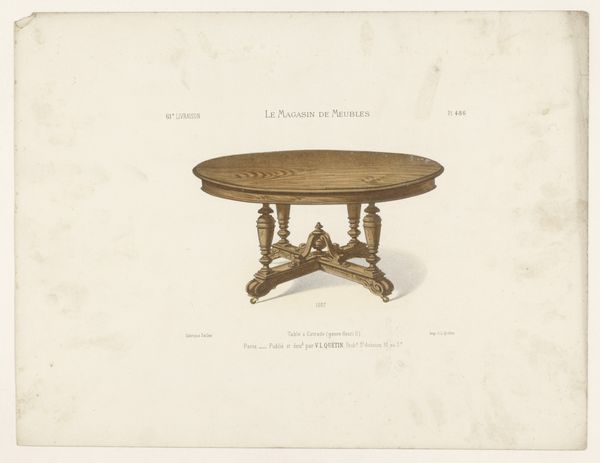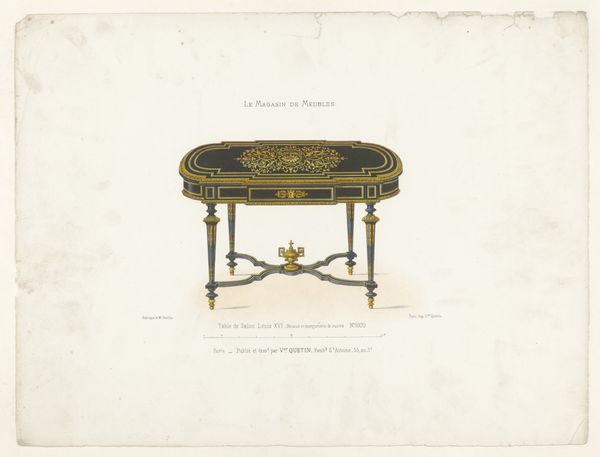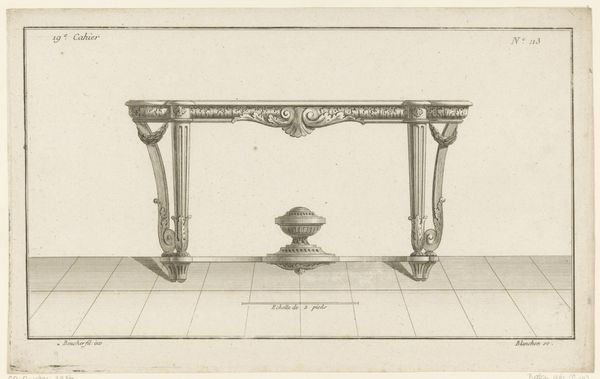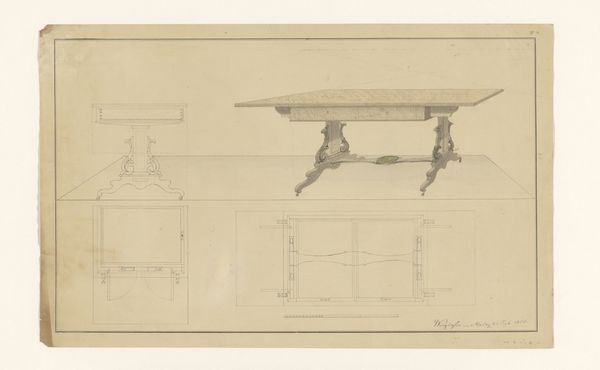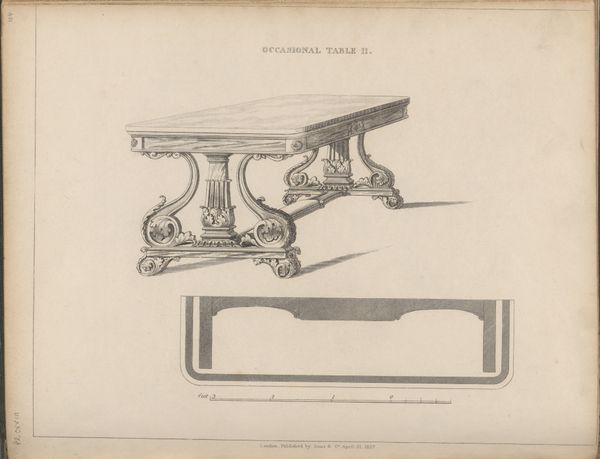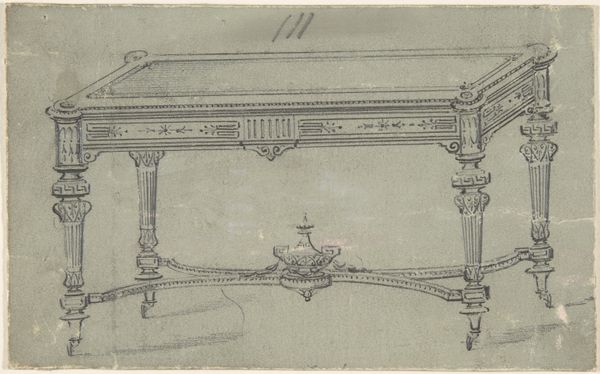
Dimensions: height 275 mm, width 361 mm
Copyright: Rijks Museum: Open Domain
Curator: Here we have "Tafel," a watercolor and print on toned paper created sometime after 1878 by an anonymous artist. The subject is a simple wooden table, almost an architectural rendering. Editor: It’s immediately striking how sturdy this table looks, yet it’s depicted with such delicacy. I’m also sensing a muted solemnity despite it being an image of furniture. Curator: The artist certainly prioritized form and precision, referencing Neoclassical ideals. The symmetrical rendering evokes a sense of order, mirroring the period’s renewed interest in classical antiquity. Consider the symbolism of the table itself—a surface for gathering, commerce, and potentially even power. Editor: But for whom was this order intended? Was this visual language intended to normalize the power structure in place, maybe hiding exploitation of labor? The clean lines almost sanitize the lived reality, concealing social issues beneath the facade of rationality. Curator: That’s a valid reading. And while the Neoclassical movement aimed at universal ideals, accessibility was limited. Perhaps this print was intended as a template, circulating among a select group, setting design standards, becoming a cultural and class marker through imitation. Editor: Absolutely. I wonder about the materiality. The artist is careful to include an engraving "Table" that states the publisher is "L. Guesrin," hinting at the rise of consumer culture where such an everyday object would have the stamp of the manufacture visible, emphasizing who this was for and not for. Also, looking at it as print and watercolor is crucial: these processes reproduce but also soften the rigid structure, a little rebellious against strict classicism, maybe. Curator: A beautiful point about this subtle act of resistance in the choice of technique. Ultimately, a symbolic object. Whether aspirational or mundane, a table in its simplicity connects us across time. Editor: A stark and deceptively quiet meditation on form, class, and perhaps even muted revolt against that form. I feel both grounded and slightly unsettled.
Comments
No comments
Be the first to comment and join the conversation on the ultimate creative platform.
